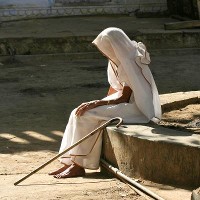15 February 2018 - 16 February 2018
Prague, Czech Republic
Socio-economic disparity in adult mortality in India
The 9th Demographic Conference of Young Demographers offers junior researchers to present their and discuss their research with colleagues from other countries or fields of study. Although the conference is focused mostly on Ph.D. students of Demography, all young (or a bit older) researches are welcomed. The conference is organized by the Young Demographers, Department of Demography and Geodemography and the Geographical Institute and will take place from 15-16 February 2018 at the Faculty of Science, Charles University in Prague.
IIASA researcher Nandita Saikia will give a presentation entitled "Socio-economic disparity in adult mortality in India: An application of orphanhood method in India Human Development Survey" at this conference. Saikia joined IIASA's World Population Program in August 2017 as an IIASA Postdoctoral researcher to work on indoor air pollution and mortality.
For more information please visit the event website.
Abstract
Socio-economic disparity in adult mortality in India: Estimations using the Orphanhood Method
Background: Due to paucity of data, no previous study has documented adult life expectancy differences in India by education, caste and religion in India.
Objective: To examine socio-economic status (SES) disparity in the adult mortality rate (45q15) and life expectancy at age 15 ( e15) in India.
Data and Methods: We estimated adult mortality by SES applying the Orphanhood method on survey information on survival of respondents’ parents. We used data from the India Human Development Survey 2011-2012. SES was measured by education, caste, religion and income of the deceased adults and their offspring.
Results: A consistency analysis of Orphanhood estimates with official statistics confirms robustness of the estimates. Mortality is higher among adults who are illiterates, belong to deprived castes or tribes and have children with lower level of education and lower level of household income. Adult mortality rate marginally vary by religions in India. e15, an important indicator of overall adult population health, is about 7.2 and 6.2 years shorter for illiterate men and women respectively compared with literate men and women. e15 , also varies significantly by the educational attainment of offspring. On average, parents of higher secondary (and above) educated children can gain about 5.2-7.9 years of adult life than parents of illiterate children. Disparity in e15 by caste and religion is not as significant as that of education or income
Conclusion: Adult mortality burden disproportionately falls to illiterate adults and adults having less educated offspring. Thus educational attainment appears to be crucial for Indian adult’s to prevent premature deaths. In absence of adult mortality statistics by socio-economic status in India, large scale surveys should continue collecting information for application of indirect techniques for mortality estimation in India.


